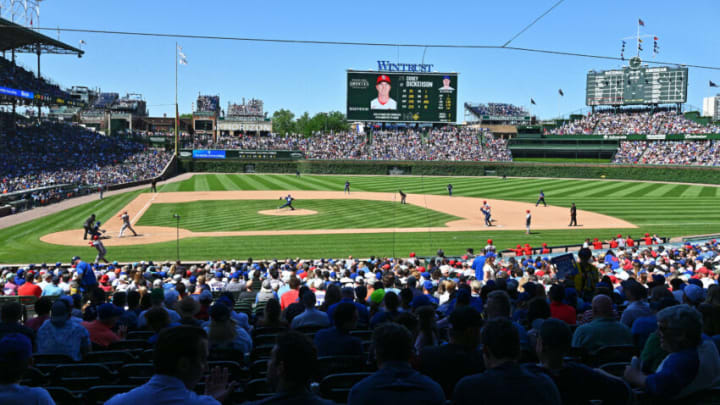Well, it finally happened. After years of to-ing, fro-ing, waffling and outright shilly-shallying, Rob Manfred at last hit Shift Delete. Next season, infielders will be forced to stay two to either side of the (newly enlarged!) second base bag, with their feet wholly on the infield dirt. Violators will be forced to attend a random kid’s birthday party with Clark the Cub. Eighth Amendment litigation is sure to follow.
Barrels of electronic ink have been spilled discussing whether a shift ban will be good or bad for baseball. Our purpose here is to examine whether it will be good or bad for the Chicago Cubs defense. The initial signs are not encouraging.
This season the Cubs have shifted (loosely defined as any positioning other than the new rule-compliant positioning) 40.2 percent of the time, tied for seventh-most in the majors. Assuming major league front offices and managers generally know what they’re doing (a leap, but certainly not a delusional one) this means that the Cubs brain trust thinks the team can win more games if it shifts more frequently than most opponents. If they’re correct, then the ban is bad news, at least in the near term.
Numbers back up this view. The major league average wOBA is .310. The Cubs pitching and defense have surrendered a wOBA of .325 good (or, rather, bad) for tied for 24th out of your 30 major league franchises. But in the shift, the Cubs have performed better. Righties have wOBA’d at a .312 clip against their shift, while lefties have achieved a .318 mark. Neither of these is especially impressive, but both are better than the Cubs’ overall performance. It seems that Chicago’s shifty proclivities have indeed helped the team suppress runs.
Left-handed hitters are, of course, the principal victims of the shift. Southbats have faced a shift over half the time league-wide this season, while their northerly cousins see a shift in only around 20 percent of their plate appearances. And the lefties have suffered, posting a meager .300 wOBA when hitting into the shift. (Righties have achieved a .320 wOBA hitting into the shift, ten points better than the league average – maybe those front offices aren’t quite so swift after all.)
The Cubs have been particularly effective in using a fairly extreme shift against lefties, positioning an infielder (usually Nico Hoerner) in short right field behind the first baseman. The Cubs are second in the majors at hoovering outs above average in this deployment, one which will be impossible under the new rule. So the Cubs look set to lose under the ban, since they have been unusually dependent on posting a guy in short right.
The shift ban will force the Chicago Cubs to get creative
The rule may ban shifts, but it does nothing to ban the data that created them. Teams will continue to use that data to move their fielders around within the confines of the new rule. Pressure will thus fall initially on Nick Madrigal (or perhaps Hoerner, if the Cubs drop a ginormous check on a free agent shortstop) to regain at least some of those outs lost to the ban.
For example, the Cubs could attempt to replicate, as near as legally possible, the short right position by stationing the second baseman at the back of the infield grass but closer to first than has traditionally been the case. This would leave a big hole between Madrigal (say) and Hoerner, playing just on the shortstop side of second. But it would allow Madrigal to stab at least some of the liners and hard grounders that the currently allowed shift converts into outs.
This, in turn, may lead to an evolution in the second base position; it may begin to play more like third. Teams may begin to place a premium on fast reactions and leaping and diving ability and a bit less on footwork and double play skills. Players familiar with both positions (which includes neither Hoerner nor Madrigal) could have an initial advantage.
Or maybe more radical outfield alignments will arise. For example, the rule allows the deployment of two “real” outfielders while the third plays in short right. This seems an unlikely option for the Cubs at the moment, but if two of the outfielders are Brennen Davis and Pete Crow-Armstrong things could get interesting
More hits will get through under the new rule – that’s the whole idea. But the team that best stems the bleeding will have at least a minor competitive advantage. Since the Cubs are relative beneficiaries of the current system, they will have a steeper hill to climb than most.
